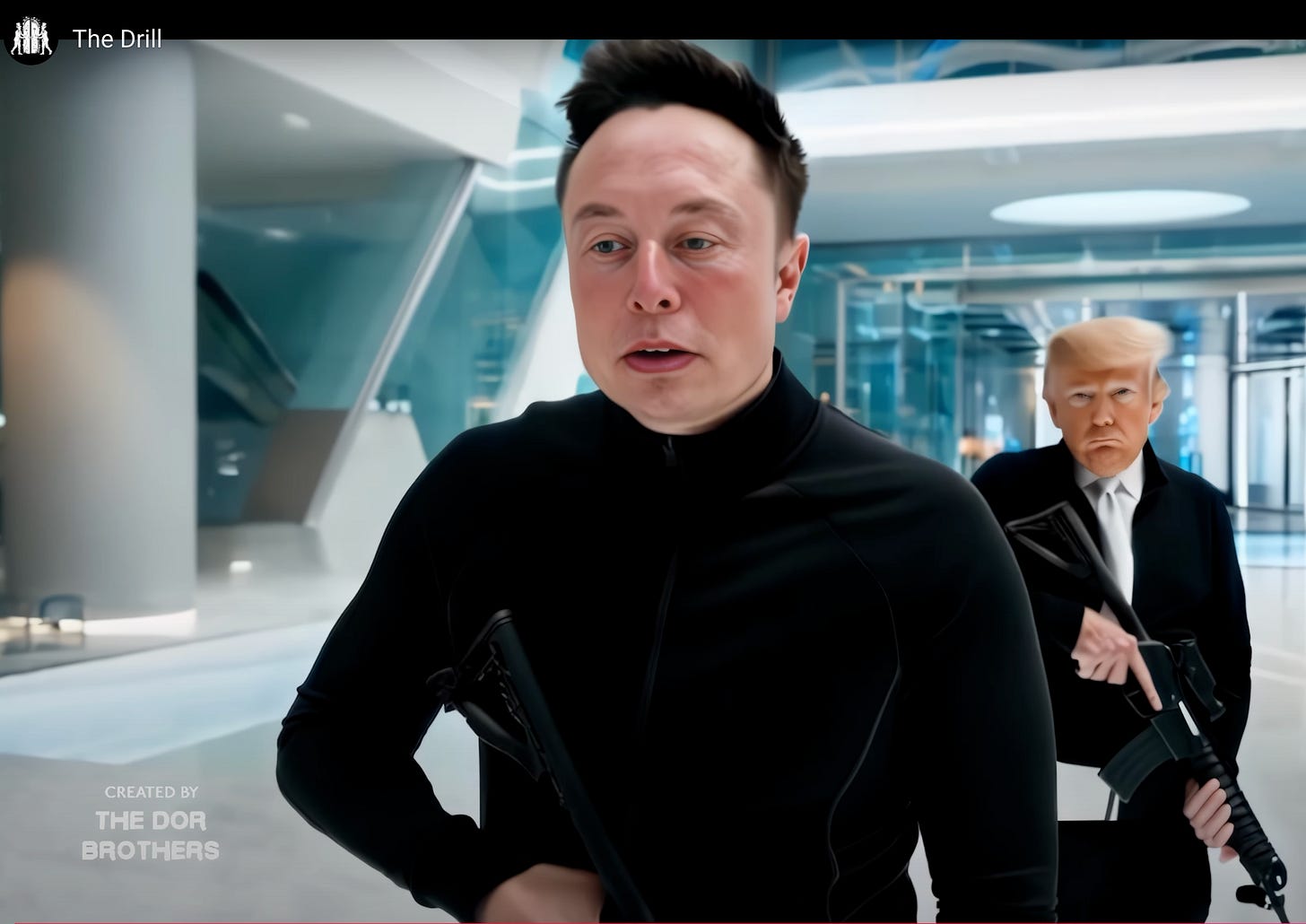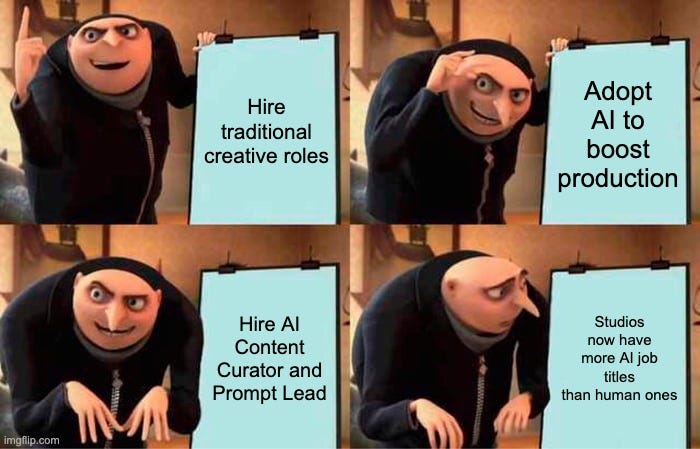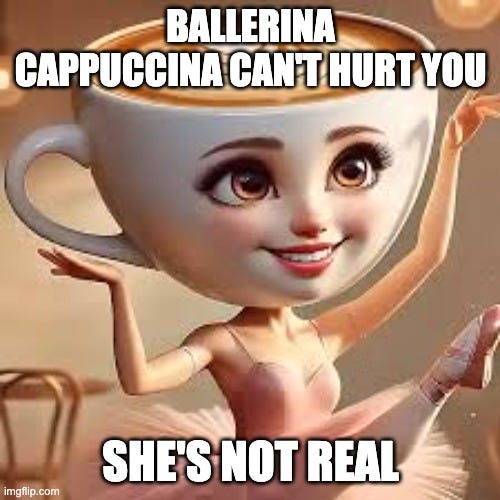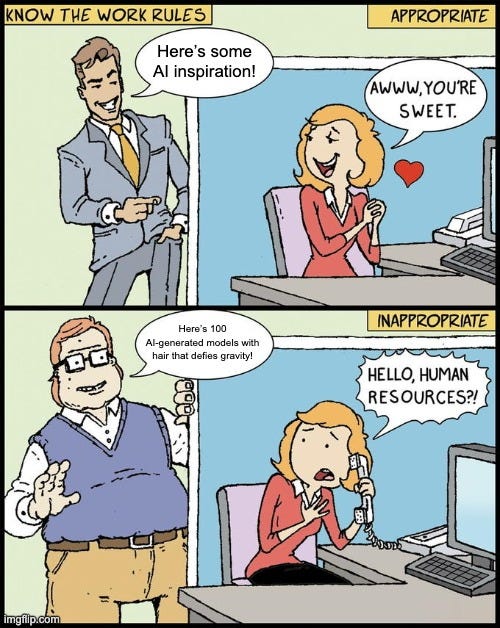Is this the golden age for creators, or are we losing what made content great?
AI is helping solo creators outpace studios and cash in, but it’s also flooding platforms with fake content and driving Gen Z away.
In today’s edition:
AI is turning creators into micro studios and VCs are taking notice
AI avatars might be more popular than real people
Gen Z is leaving Pinterest as AI content takes over its platform
Older creators are leading the charge in AI adoption
Catch up in 5 minutes
It’s the Creators delivers quick and insightful updates on creators, their businesses, and the platforms they use.
AI is turning creators into micro studios and investors are betting big on their earning power
Generative AI is changing the creator economy by helping solo creators and small teams produce studio-quality content that once needed large budgets and staff. With accessible AI tools for video, audio, writing, and design, creators can now take on ambitious projects without big technical barriers.
The Dor Brothers, for example, use AI to create cinematic-quality work on a shoestring budget. They’ve produced over 300 video projects, including dozens of commercials and viral videos, with their work grabbing more than 100 million views worldwide. The Texas State Senate personally invited them to testify on upcoming AI regulations, recognizing their expertise with creativity and technology. They show how individuals can now go toe-to-toe with traditional production houses.
This shift in production comes as industry investment and new monetization models grow. In 2024, over $900 million in venture capital went into the creator economy. Tech giants and platforms like TikTok and Amazon launched new initiatives to support and invest in creators. TikTok moved from its original Creator Fund to performance-driven programs. Amazon’s Creator Connections lets creators partner directly with brands for campaign commissions. These moves show a broader trend toward helping creators earn more and build sustainable businesses.
Even with these new opportunities, most creators still make less than $1,000 a year, and only 4% earn over $100,000. Access to capital and advanced tools drives this gap. As AI lowers the cost and complexity of content creation, more creators can produce more content, reach wider audiences, and tap into new revenue streams like affiliate marketing, brand deals, and eCommerce.
The creator marketplace is maturing. Tech companies, VCs, and brands now compete to partner with creators. As AI tools become standard and investment grows, creators who use these technologies and platforms can break through old income ceilings and change what’s possible in digital entrepreneurship.
At the same time, AI is generating new jobs at studios
As AI becomes central to content production, new jobs are appearing. Roles like AI content curators, prompt leads, and workflow designers now manage and refine AI-generated material to keep brand consistency and creative quality. This human-AI collab leads to faster turnarounds, lower costs, and higher engagement. It also makes you question who’s in control and what’s real when humans work so closely with AI.
AI avatars are becoming brand powerhouses
AI-generated personalities like Lil Miquela, who has over 2.4 million Instagram followers and partnerships with brands like Prada and Samsung, show that virtual influencers can build real connections and drive big campaigns.
The rise of these AI avatars marks a new chapter in social media influence, where compelling narratives and community engagement matter more than whether the creator is human or virtual. The viral rise of Ballerina Cappuccina, an AI-generated character with a complex family tree, shows how AI avatars are very much part of pop culture. Ballerina Cappuccina’s backstory is a big part of what makes her so appealing and viral. She isn’t just a quirky AI-generated ballerina with a cappuccino cup for a head, she’s the star of a sprawling, absurd, and intentionally over-the-top fictional universe of “Italian brainrot.” TikTok and Instagram users have embraced her by remixing her videos, adding dramatic music, and inventing new episodes of her “life.” The intentionally silly, ever-expanding lore lets fans participate and riff on her story, making her feel like a living, collaborative pop culture phenomenon rather than just a static meme.
This elaborate, crowd-sourced backstory deepens Ballerina Cappuccina’s appeal by giving her a sense of personality and “history” that invites ongoing engagement and creativity. Her virality is just a peek into how AI avatars can become true brand powerhouses, not just by looking cool, but by letting the internet co-author their story.
Gen Z is fleeing Pinterest as AI-generated content floods the platform
Pinterest, once a favorite for Gen Z because of its personal, journal-like feel and human creativity, now faces backlash. Users report a surge of AI-generated pins dominating search results. Many now struggle to find real, human-created inspiration for things like hair color, nail art, or interior design. This frustration is pushing users toward other platforms (like cosmos.so).
All content isn’t created equally. While AI can increase content volume, it can also erode the trust that got users to a platform in the first place.
Older creators are leading the AI adoption wave
A new survey shows that 59% of creators use AI to streamline workflows and boost monetization. About 34% automate follower engagement and 23% use AI for product curation and analytics. As the creator economy becomes more saturated and consumer spending tightens, creators focus more on efficiency. AI adoption is less about hype and more about survival.
Surprisingly, creators over 25 are more likely to use AI throughout their workflow than younger creators. Cost barriers and the complexity of advanced AI tools may slow younger creators, but the trend is there. AI is now a must-have for most professionals, not just early adopters or tech enthusiasts.
Thanks for reading It’s the Creators, a weekly email about creativity, AI, and creators.
If you need a simple way to organize and search your photos and videos, check out Desktop Docs. It’s a tool I made for creators who want to spend less time on admin work and more time creating.
See you next time.






